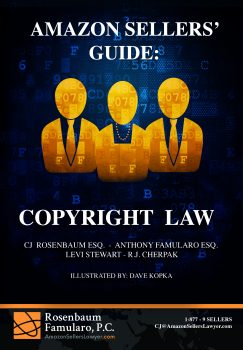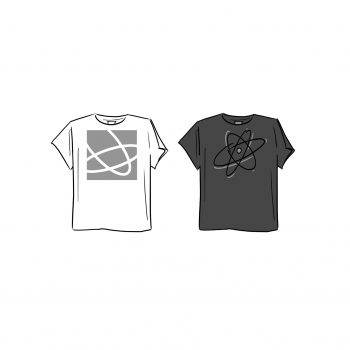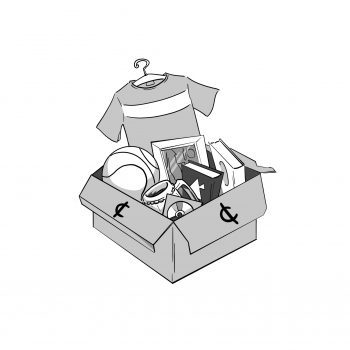
Amazon Sellers’ Guide: Copyright Law
By: CJ Rosenbaum Esq., Anthony Famularo Esq., Levi Stewart, and RJ Cherpak
Chapter 6: Defenses to Copyright Infringement on the Amazon Platform ……….. 67
I. Copyright Infringement ……….. 67
II. The Doctrine of Fair Use ……….. 69
III. The Doctrine of De Minimis Use ……….. 72
IV. The First Sale Doctrine ……….. 73
V. Conclusion ……….. 75
Chapter 6: Defenses to Copyright Infringement
I. Copyright Infringement
Copyright infringement is the act of violating exclusive rights that are granted to the owner of a copyright under the 1976 Copyright Act. [1]
 As previously mentioned in chapter 2, the rights granted to copyright holders upon registration include the exclusive rights to control who reproduces their work, distributes their work, performs their work, displays their work, and creates derivative copies based on their work. If an unauthorized party seizes one of these exclusive rights, the copyright holder may be entitled to bring a claim for copyright infringement.
As previously mentioned in chapter 2, the rights granted to copyright holders upon registration include the exclusive rights to control who reproduces their work, distributes their work, performs their work, displays their work, and creates derivative copies based on their work. If an unauthorized party seizes one of these exclusive rights, the copyright holder may be entitled to bring a claim for copyright infringement.
To successfully bring a copyright infringement claim, two elements must be proven; first, one needs to prove they have “ownership of a valid copyright” and second, there must be “copying of constituent elements of the work that are original.” [2]
To prove that you have a valid copyright one should be able to provide a copyright certificate or some other form of proof that shows the date on which the copyrighted material was made. [3]
To satisfy the second copyright infringement element, the holder of the copyright must be able to show that the third party accused of infringing had access to the original work, copied that work, and that the third party’s copied work is substantially similar to the original copyright protected work. [4]
Copyright infringement can occur through various mediums including books, movies and photos. [5] Some examples of copyright infringement include recording a movie in a theater, downloading movies or music without paying for them, using pictures for a blog without authorization to do so, and copying a blog, book or podcast without authorization. [6]
II. The Doctrine of Fair Use
The Fair Use Doctrine is an exception to the rule that no one may use an artist or author’s exclusive rights granted under a copyright. This doctrine is one of the more commonly-invoked defenses to copyright infringement claims. [7] It was implemented by courts to avoid the strict application of copyright law, which would sometimes result in limiting creative ideas.
There are four factors that are taken into consideration when a court decides whether the use of a copyright protected work is fair use:
(1) the way and purpose for how the copyright protected work is used and whether it is used for a commercial or non-profit educational purpose;
(2) the nature of the copyrighted work;
(3) the proportionality between the amount and substance of the copyrighted work used and the copyrighted work as a whole, and;
(4) the impact that this use has on the market value of the copyright protected work. [8]
The first of the four factors is primarily concerned with the reasons behind why one is using a copyrighted work and if one is attempting to make a profit through their usage of the copyrighted work. The use of the material to make a profit generally weighs against one being able to use the fair use defense but does not entirely prevent one from getting this first factor to weigh in their favor. [9]
The second fair use factor focuses on the level of creativity of a work. Generally, the more creative a work is, the more likely it is that the court will find Fair Use. On the other hand, the less creative a work is, the more likely it is that one will be able successfully use the fair use doctrine against the new work.
The third factor focuses on the amount and substance of a copyright protected work that one uses. The greater the amount one copies or uses and the more similar it looks to the original work, the less likely one will be able to show fair use. However, Sellers should be aware that just because one makes a copy of the entire original work, it does not bar them from being able to show fair use, as this is just one of the four factors that will be looked at. Moreover, this particular factor also takes the substantive value of the work that is used into consideration as well; so, if one only copies the most noteworthy or significant parts of a work, they still may not be able to successfully invoke fair use because copying these significant, noteworthy parts, as few as there may be, can still be looked at as the equivalent to copying an entire work.
The last of the four factors, and probably most pertinent to Amazon sellers, is the commercial impact that the use would have on the rights holder. This fourth factor, which is one of the more complex factors to determine, considers the hypothetical harm that would result if the copied product was for sale in the same market as the original copyright protected product.
III. The Doctrine of De Minimis Use
Another doctrine that is vital when defending yourself from claims of copyright infringement is the de minimis doctrine. The de minimis doctrine holds that some copyright issues are so insignificant and minimal that courts should not spend time on them, and instead concern themselves with more substantive issues. [10]
“De minimis” stems from the Latin phrase, “de minimis non curat lex,” which translates to “the law does not concern itself with trifles.” The de minimis defense to copyright infringement acknowledges that even if a work has been copied, and there is no other defense available, a little or non-substantial copy should not be regarded as copyright infringement. [11]
An example of where a court will likely allow one to successfully invoke the de minimis doctrine as a defense would be where a party copies a portion of a copyright protected work but the copied portion in the new work is so inconspicuous that it is not easily visible.
To break down this doctrine in the simplest of terms, it may be helpful to our readers and sellers to start by asking themselves “how much is too much?” when thinking about the de minimis doctrine.
IV. The First Sale Doctrine
 The First Sale Doctrine states that “the owner of a particular copy or phonorecord lawfully made under the [Copyright Act], or any person authorized by such owner, is entitled, without the authority of the copyright owner, to sell or otherwise dispose of the possession of that copy or phonorecord.”[12] This means that when one buys a copy of a copyright protected work from a copyright holder, the buyer acquires the rights to sell, display, distribute or dispose of that particular copy however they wish without having to take the interests of the copyright holder into consideration. [13]
The First Sale Doctrine states that “the owner of a particular copy or phonorecord lawfully made under the [Copyright Act], or any person authorized by such owner, is entitled, without the authority of the copyright owner, to sell or otherwise dispose of the possession of that copy or phonorecord.”[12] This means that when one buys a copy of a copyright protected work from a copyright holder, the buyer acquires the rights to sell, display, distribute or dispose of that particular copy however they wish without having to take the interests of the copyright holder into consideration. [13]
Despite the name of the First Sale Doctrine, a sale does not need to happen in order for the doctrine to be invoked as the doctrine can apply to situations in which a copy of a copyrighted work is given away or permanently transferred without any money changing hands. [14] The doctrine serves as a statutory limitation that Congress has placed on the exclusive rights that are granted to copyright holders. [15]
There are restrictions on these rights that are granted to the buyer. The restrictions include the buyer’s right to distribute his or her copy of the copyright holder’s work being terminated once he or she has sold his or her particular copy and the lack of protection for those who make unauthorized copies of a copyright protected work. The First Sale Doctrine cannot be used to protect those who have rented, leased, or obtained possession of a copyright protected work without having actual ownership of the work. [16]
The doctrine serves as another way in which a party can defend themselves when being sued for copyright infringement.
V. Conclusion
Copyright infringement claims against sellers are common. Generally, Amazon will remove a Seller from a listing or suspend the Seller’s account if a complaint is received from an alleged rights owner. Sellers need to be aware that in addition to the loss of sales on Amazon, a copyright holder can elect to recover statutory damages as opposed to actual damages due to lost profits, which can result in an infringer or infringers being liable for anywhere between $750 and $30,000. [17]
A party who willfully infringes on a work with copyright protection may be held liable for up to $150,000. [18] The test for determining copyright infringement is vague and can be a complicated issue for courts to address and erratic holdings by courts is not uncommon. [19]
Copyright Law: Chapter 6
[1] University Copyright Office, Copyright Infringement Penalties, Purdue University (last visited July 27, 2018), https://www.lib.purdue.edu/uco/CopyrightBasics/penalties.html.
[2] Feist Publications, Inc. v. Rural Telephone Service Co., Inc., 499 U.S. 340, 361 (1991).
[3] Louis Kroeck, How to Prove Copyright Infringement, Chron (last visited July 27, 2018), http://smallbusiness.chron.com/prove-copyright-infringement-60828.html.
[4] Id.
[5] Mary Juetten, How to Avoid Copyright Infringement, Legalzoom (last visited July 27, 2018), https://www.legalzoom.com/articles/how-to-avoid-copyright-infringement.
[6] Id.
[7] University Marketing and Communications, Fair Use Doctrine, Washington State University (last visited July 27, 2018), https://ucomm.wsu.edu/fair-use/.
[8] University Marketing and Communications, supra note 113.
[9] Id.
[10] The De Minimis Defense in Copyright Law. De Mini-What?, UNT (Sept. 5, 2017), https://blogs.library.unt.edu/copyright/2017/09/05/the-de-minimis-defense-in-copyright-law-de-mini-what.
[11] Id.
[12] 17 U.S.C. § 109(a).
[13] Offices of the United States Attorneys, 1854. Copyright Infringement, United States Department of Justice (last visited July 27, 2018), https://www.justice.gov/usam/criminal-resource-manual-1854-copyright-infringement-first-sale-doctrine.
[14] William F. Patry, 4 Patry on Copyright § 13:15 (2018).
[15] Offices of the United States Attorneys, supra note 119.
[16] 17 U.S.C. § 109(d).
[17] 17 U.S.C.A. § 504 (c)(1).
[18] Id.
[19] Jason E. Sloan, An Overview of the Elements of a Copyright Infringement Cause of Action-Part I: Introduction and Copying, American Bar Association (last visited July 27, 2018), https://www.americanbar.org/groups/young_lawyers/publications/the_101_201_practice_series/elements_of_a_copyright.html.
